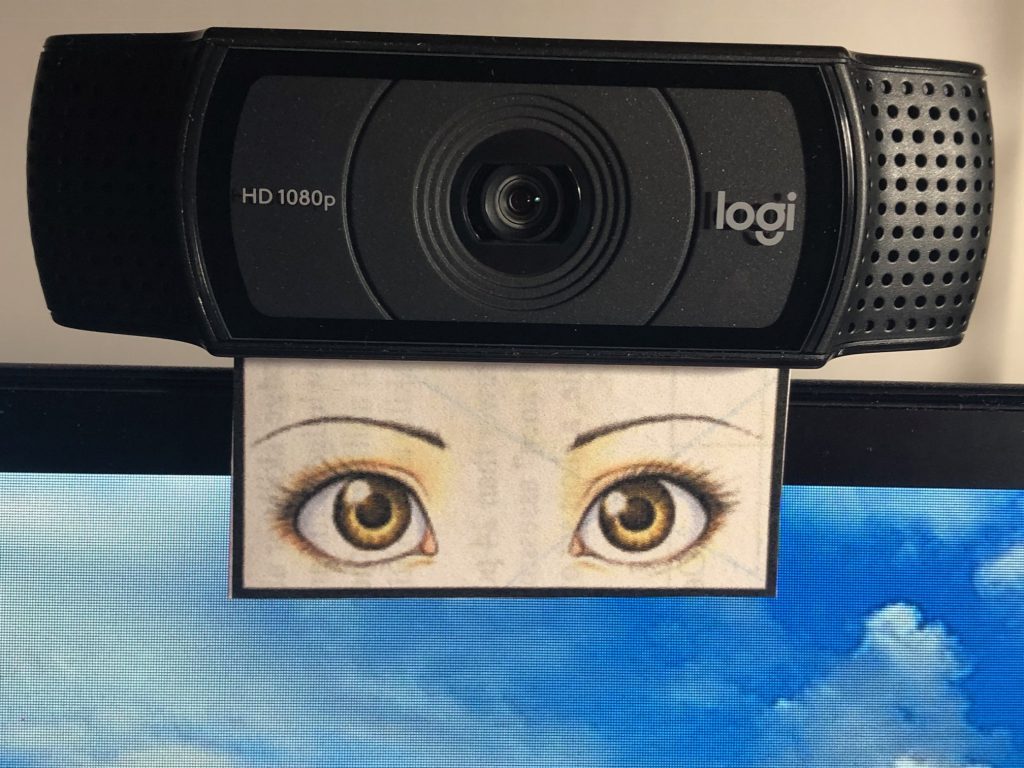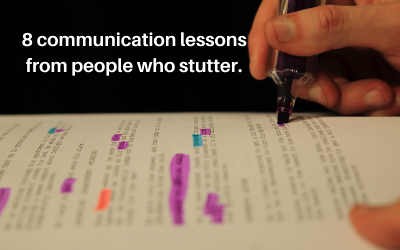Eye contact is everything in public speaking. It will make you appear more authoritative and trustworthy. It is one of the most important non-verbal communication skills that you can master. This essential public speaking skill is on par on the power scale with the smile and is indispensable for both in-person and virtual presentations, though the latter is more challenging.
Proper eye contact means holding a gaze as you speak either to a live audience or via a webcam. It’s only when you see eye-to-eye with your audience that meaningful communication can be established. And that can mean success or failure when you do a presentation, a speech, a panel, a workshop, or lead a discussion.
9 pro tips about eye contact when speaking
While it’s easier said than done, eye contact can be your chief weapon for boosting engagement IRL or online. Let’s look at what positive eye contact is and ways to put it into practice the next time you speak or present. Here are nine things you should know:
- The average gaze length is three seconds. To build rapport, your eyes should connect with a cross-section of your audience about 50 to 70 percent of the time.
- The length of time you should gaze can vary according to cultural norms, like when addressing executives from other countries and backgrounds.
- Focusing your eyes helps you concentrate and lessen any performance anxiety you may feel.
- With a steady gaze, people with heads bowed looking at their phones may notice your connection with the others and stop scrolling.
- When your audience sees your eyes scanning their faces, they feel motivated to signal to you how they feel about what you’re saying–with nods and smiles.
- With good eye contact, your talk becomes less monologue and more dialogue, with your audience communicating back through their gestures and facial expressions. Your speech or presentation becomes a conversation.
- When you look someone in the eye for three seconds, you will naturally slow down your speech. You might even pause. This will make you sound more in control, confident and powerful.
- When you gaze at people, they will pay more attention and remember more of what you said.
- The same is true for video calls. Research shows that online participants retain more of the content shared when there is more virtual eye contact involved. A direct gaze at the camera by the meeting leader for 30% of the video conference significantly increases what they remember.
How can you improve your eye contact the next time you present?
Here are some tips and tricks:
In-person
- Start your talk by making eye contact with several people in the audience.
- Bounce your gaze around the room from side to side and back to front, don’t scan mechanically.
- Periodically make eye contact with an individual in the audience you don’t know.
- Avoid looking at a trusted friend or relative; you may be perceived as insecure or nervous.
- Don’t cast your eyes over someone’s head, look at their face or eyes.
- Add a smile occasionally to connect more empathetically.
Online
- First, get your eye line right. That will take practice. You may need to raise your laptop on a stack of books or a special stand, so the webcam is level with your eyes.
- The sweet spot for your eyes may not be the lens itself but slightly below or above. Experiment by taking a screenshot of yourself looking at various points near the webcam lens. See what looks most natural. The goal is to come as close as possible to the eye-to-eye of in-person contact.
- Train your eyes to look at that spot. Or you can place a sticker or visual marker as close as possible to the lens without obstruction. Paste images of a loved one or an imaginary audience near the webcam. Imagine that your audience is physically inside the device. I have an illustration of a pair of eyes just under my Logitech webcam to anchor my gaze

- Place your primary notes and reference materials in the center of your main screen so you can reference them without breaking your visual connection with the virtual audience. Use your peripheral vision to glance at the chat pane and gallery.
- Keep arm’s length distance from the lens so you’ll be seated or standing at a comfortable distance and appear from the waist up in the frame. You don’t want to be too close or too far from the camera. Use painter’s tape to mark a spot on the floor where you should stand or sit so you will be ready for your next call.
- Rest your eyes to avoid eye strain. Stop looking at the screen periodically and remember to blink. Ophthalmologists have a 20/20/20 rule: Every 20 minutes look at something 20 feet away for 20 seconds. Keep eye drops and lubricate your eyes often to prevent dryness that can cause blurry vision.
Creating positive and meaningful eye contact is an important hallmark of a great public speaker on any stage and with audiences of all sizes. With practice, you’ll master this important skill and turn it into a behavior that will serve you well in all areas of your life.





